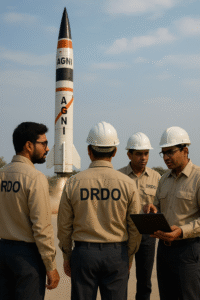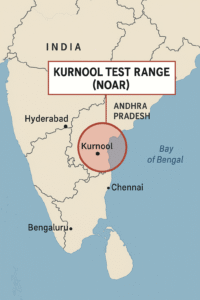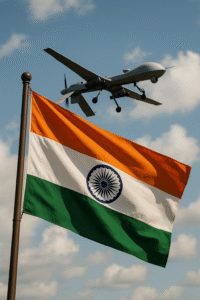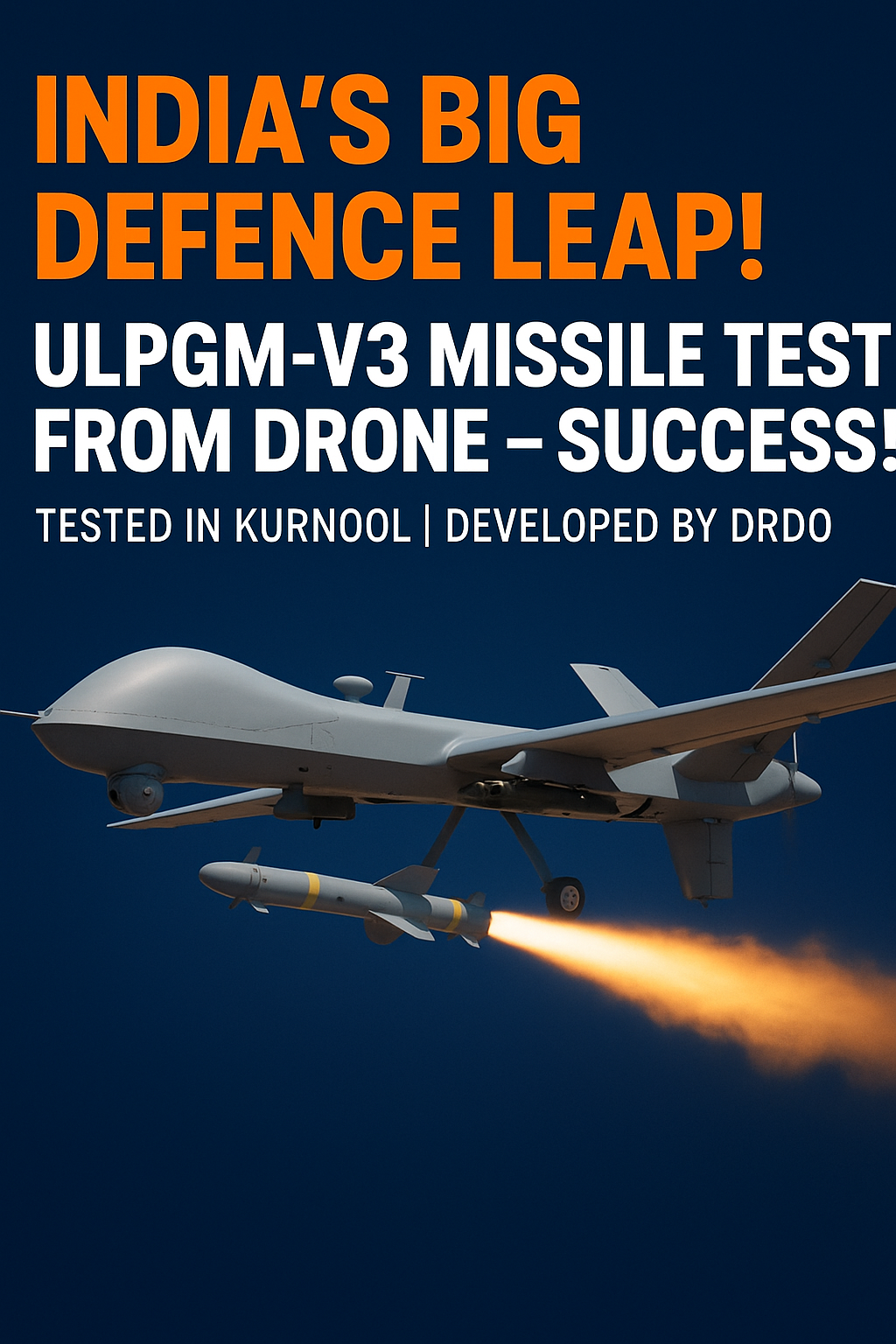India Successfully Tests Drone-Launched ULPGM-V3 Missile. In a major milestone for India’s defence sector, the Defence Research and Development Organisation (DRDO) has successfully test-fired the ULPGM-V3, a drone-launched precision-guided missile, from a test range in Kurnool, Andhra Pradesh. This cutting-edge trial marks a significant advancement in India’s military strike capabilities and underlines the nation’s rapid progress in indigenous defence technology.
What Was Tested: ULPGM-V3 Precision Missile

The ULPGM-V3 (Unmanned Aerial Vehicle Launched Precision Guided Missile – Version 3) is designed to strike ground targets with high accuracy while being launched from drones. This makes it a vital addition to India’s growing arsenal of smart weapons, especially in modern combat scenarios where unmanned systems and precision targeting are key.
The test, carried out at the Nagayalanka Outdoor Air Range (NOAR) in Kurnool, demonstrated the missile’s performance and precision. According to defence experts, the ULPGM-V3 is built to neutralize enemy assets with minimum collateral damage—an essential feature in today’s evolving battlefield dynamics.
Defence Minister Applauds the Breakthrough

Defence Minister Rajnath Singh took to social media to celebrate the successful trial, calling it a “major boost” to India’s missile capabilities. He congratulated DRDO, along with its private sector partners including MSMEs, defence start-ups, and DCPPs (Development-cum-Production Partners), for the joint effort in developing and testing this system.
“This success proves that Indian industry is now ready to absorb and produce critical defence technologies,” he noted in his post.
This acknowledgment is significant, especially as India pushes forward with the ‘Aatmanirbhar Bharat’ (Self-Reliant India) initiative in the defence sector.
Why Kurnool’s NOAR Was Chosen

The choice of NOAR (Nagayalanka Outdoor Air Range) in Kurnool for the trial was not accidental. DRDO has been using this advanced facility to test futuristic technologies. In recent months, NOAR has also hosted successful trials of Directed Energy Weapons (DEWs)—including high-energy laser systems capable of neutralizing fixed-wing UAVs and swarm drones.
This reflects India’s growing infrastructure in high-tech defence testing and highlights DRDO’s commitment to enhancing indigenous capabilities.
The Strategic Importance of ULPGM-V3
The addition of ULPGM-V3 to India’s defence toolkit brings several strategic advantages:
-
Drone-launched capability allows operations in remote or enemy zones without risking human lives.
-
Precision guidance ensures accurate hits with minimal civilian or structural damage.
-
Indigenous development reduces reliance on foreign imports, saving costs and boosting national security.
-
Rapid deployment from unmanned platforms enhances India’s tactical flexibility in real-time conflicts.
In today’s warfare, precision and automation are no longer luxuries—they are necessities. The successful trial of this missile demonstrates India’s readiness to meet these modern challenges head-on.
India’s Growing Drone & Missile Ecosystem
The successful testing of ULPGM-V3 also reflects the maturing ecosystem of India’s drone warfare strategy. In the past two years, India has significantly ramped up efforts to develop indigenous UAVs, anti-drone systems, and smart missile platforms. From loitering munitions to combat drones, the country is making strategic investments in technologies that ensure dominance in future wars, which are increasingly shaped by automation and AI.
Conclusion: A New Era of Smart Defence

India’s successful test of the ULPGM-V3 marks the beginning of a new era in military preparedness. With smart, unmanned, and precision-based systems becoming the norm globally, this achievement highlights India’s ability to innovate, adapt, and lead.
As more such systems undergo testing and development, the country moves closer to becoming a major global hub for defence technology. This not only strengthens national security but also opens the door to export opportunities, creating a win-win for both defence and the economy.


Leave a Reply